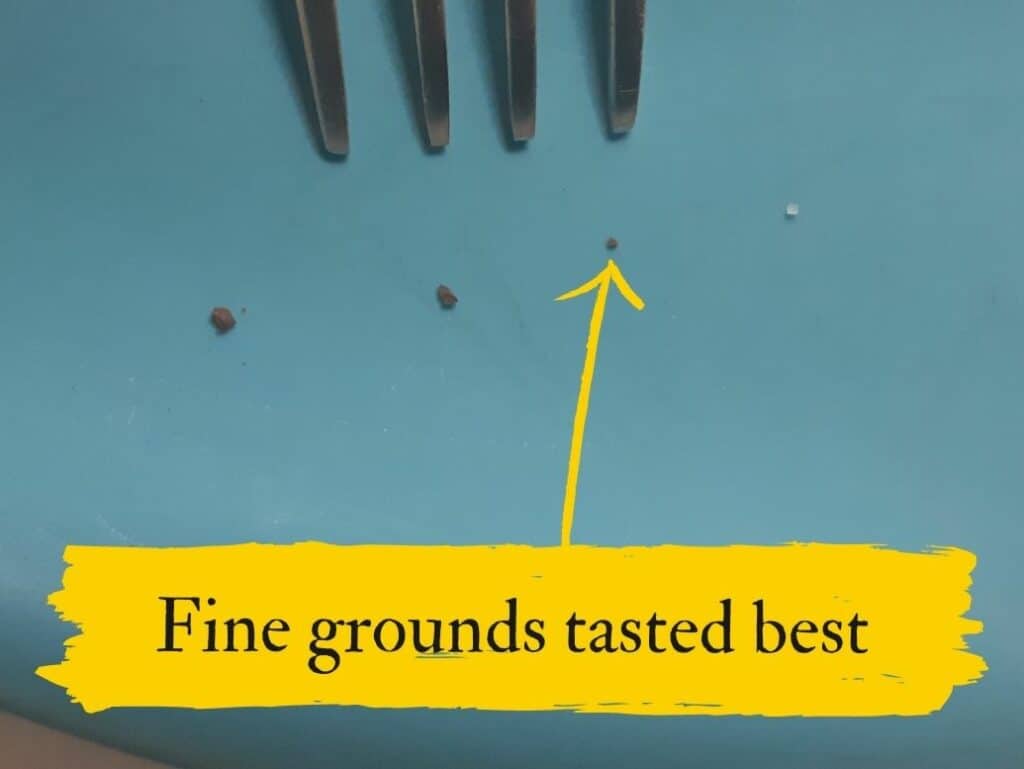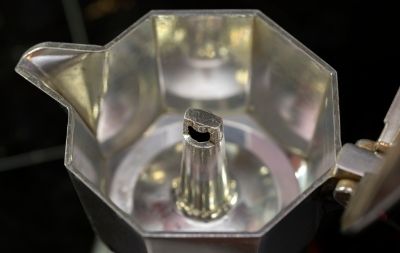Moka pots are capable of producing one of the tastiest coffee experiences. However, moka pots tend to take a little bit of time and experimentation before you’re able to consistently brew a well extracted cup.
One problem that some moka pot brewers encounter is channeling. This article explains what moka pot channeling is and how to fix it.

What is coffee channeling?
Channeling is when pressurized water travels through a narrow passage in ground coffee instead of flowing evenly through the entire bed. This causes the coffee to lack flavor and taste weak because it is under extracted.
This happens most frequently in espresso shots because they produce between 7-9 bars of pressure. This means the water is forced through the coffee at about 7-9 times as much pressure as standard atmospheric pressure.
Moka pots also produce coffee under pressure, but much less than espresso machines. In fact, moka pots only produce up to 2 bars of pressure, which isn’t too much more than normal atmospheric pressure.
A higher pressure causes the brewing water to find the path of least resistance. This is where channeling problems can occur.
What causes a moka pot to channel?
Moka pot channeling is caused when there is too much resistance for the water pressure. This happens when the coffee bed is too dense, the grind size is inconsistent or the coffee bed otherwise becomes uneven.
Certain factors may create an excess amount of pressure inside the moka pot, which prevents the water vapor from easily travelling up through the coffee bed and into the upper chamber.
As a result, under these higher pressure circumstances, the water tends to find a path, or channel, through the coffee that provides the least amount of resistance. This causes the coffee beans to receive an unequal amount of water, which makes the beverage taste inconsistent from one brew to the next.
It can also create an unpleasantly bitter moka pot flavor as well.
How do you stop channeling in moka pot?
There are a few things to try that will reduce moka pot channeling:
Do not tamp your coffee
Tamping your moka pot coffee bed will likely create too much resistance against the building pressure inside the bottom chamber. A densely tamped bed may even cause the pressure valve to release, ruining the batch. Although this is not likely.
What’s more likely is that tamping will force the water vapor to unevenly rise through the coffee bed. This causes the channel of coffee to over extract because it has too much contact with the water.
The coffee will taste under extracted because most of the coffee has not been dissolved.
We recommend that you do not tamp your moka pot coffee at all. Instead, simply add your grounds to the coffee basket and gently shake to level them out.
Use the correct grind size
Similar to tamping, a fine grind size may cause excess pressure in the bottom moka pot chamber. This is a result of the bean particles being too compact.
The water vapor will seek the path of least resistance and force its way through a narrow path. It’s not uncommon for this to occur around the edges of the coffee ground basket.
We found that the best moka pot grind size was slightly smaller than a grain of table salt, but slightly larger than an espresso grind.

Dry your coffee basket before brewing
A wet coffee basket may cause coffee grounds to stick to the basket edges. This could cause an uneven coffee bed density, which may result in channeling. A simple solution is to make sure your grounds basket is dry before adding beans into it.
What does channeling look like?
Moka pot channeling often happens around the edges of the grounds basket. As a result, you will often notice that the benter of the coffee puck is noticeably drier and lighter in color than the edges.
A well-extracted moka pot coffee will have a consistent color and moisture level throughout.
Another sign is a noticeable hole in your coffee bed when you unscrew the moka pot after brewing.






